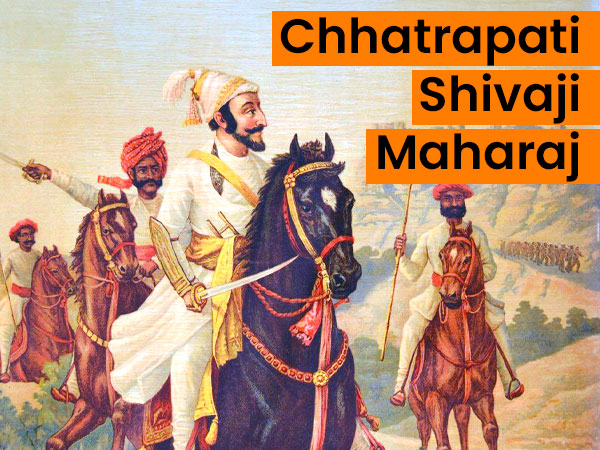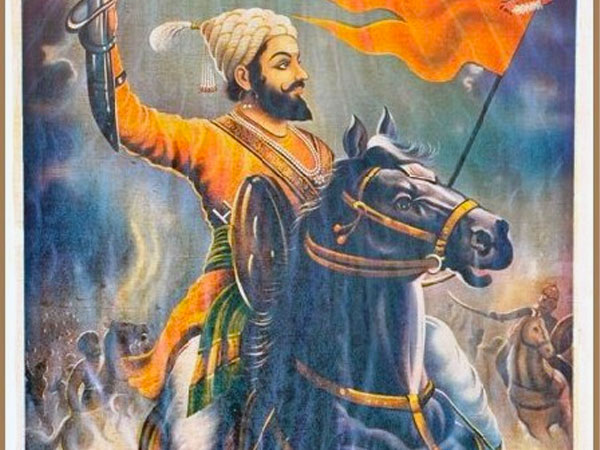Just In
- 55 min ago

- 3 hrs ago

- 4 hrs ago

- 9 hrs ago

Don't Miss
- Technology
 Sony’s Critically Acclaimed Helldivers 2 Rumored to Release on Xbox, Claims Industry Insider
Sony’s Critically Acclaimed Helldivers 2 Rumored to Release on Xbox, Claims Industry Insider - Movies
 Is Coolie A Sequel To Rajinikanth's Thee? Fans Speculate On Lokesh Kanagaraj's Next Film After Teaser Release
Is Coolie A Sequel To Rajinikanth's Thee? Fans Speculate On Lokesh Kanagaraj's Next Film After Teaser Release - Finance
 American Express Revamps Platinum Travel Credit Card Design
American Express Revamps Platinum Travel Credit Card Design - Automobiles
 Log9 Unveils Amphion & Nexmile – Revolutionizing EV Asset Management
Log9 Unveils Amphion & Nexmile – Revolutionizing EV Asset Management - Sports
 Babar Azam Fans Accused of Cyberbullying; Forces Pakistani Actress To Lock Instagram Account
Babar Azam Fans Accused of Cyberbullying; Forces Pakistani Actress To Lock Instagram Account - News
 Karnataka CM Siddaramaiah, DK Shivakumar Lead Congress Protest Over Drought Relief
Karnataka CM Siddaramaiah, DK Shivakumar Lead Congress Protest Over Drought Relief - Education
 Students of the Canadian International School in Bangalore Raise Nearly 60 Lakh Rupees for Bangalore NGOs
Students of the Canadian International School in Bangalore Raise Nearly 60 Lakh Rupees for Bangalore NGOs - Travel
Kurnool's Hidden Gems: A Guide To Exploring India's Lesser-Known Treasures
Shivaji Jayanti: 22 Lesser Known Facts About The Brave Maratha Warrior-King
Shivaji Bhonsale, popularly known as Chattrapati Shivaji Maharaj was a brave warrior-king of India who established the Maratha Empire. He dreamt of 'Swaraj' meaning self-rule and went on to live his dream through his exceptional warfare skills and bravery. He was born in the year 1630. Every year, his birth anniversary is celebrated on 19 February 19, though historians have some disagreement on his birth date. The same is also being celebrated on March 21 in 202.
On the birth anniversary of this great Maratha warrior-king, let's go through some lesser-known facts related to his life.

Also read: Remembering Lala Lajpat Rai On His 155th Birth Anniversary: Lesser Known Facts About Him
1. Shivaji was born in the hill-fort situated in Shivneri, a small town in Junnar city of Pune, Maharashtra. His father Shahaji Bhonsale was a general of Deccan Sultanate while his mother Jijabai, was the daughter of Lakhuji Jadhavrao, a Sardar from the Yadav Royal family of Sindhkhed.
2. Shivaji got his name after Goddess Shivai, the local deity of Shivneri.
3. Since his childhood, Shivaji was dedicated to his mother who herself was extremely religious. It was she who instilled religious teachings into her son from the very beginning.
4. It is said that Shivaji was deeply interested in Ramayana and Mahabharata, which had a great impact on his religious values and beliefs. Apart from this, Shivaji also sought help and advice from religious scholars and saints.
5. In the year 1640, he married Saibai (Sai Bhosale) who hailed from the Nimbalkar family, a Maratha Clan.
6. Shivaji captured Torna Fort in the year 1646 while he was barely 16 years old. This was the first fort captured by him. He along with his trusted friend Firangoji Narsala, persuaded the Bijapur commander of Torna Fort to hand over the possession to Shivaji.
7. In order to catch Shivaji, Shahaji (the father of Shivaji) was imprisoned on 25 July 1648 on the orders of Mohammad Adilshahi, the ruler of Bijapur. However, Shahaji was released in the year 1649 and Shivaji paused his conquests only to gain some warfare skills and prepare his own trusted army.
8. Earlier Shahaji had an army of 2000 people. But with extreme determination and intelligence, Shivaji formed a strong and brave army that comprised of 10,000 soldiers. The number later increased to 1.5 Lakhs. All of them were well-trained in many warfare skills, especially guerilla warfare.
9. Shivaji is known as the father of the Indian Navy as he is the one who first established naval forces. With his strong naval forces, he secured Konkan, the coastline of Maharashtra. He also made many sea forts to protect India from any other foreign invaders.
10. On 10 November 1659, Shivaji killed Afzal Khan, the general of Adil Shah who was assigned the duty to capture Shivaji. Afzal Khan is said to be a well-built man who was taller and stronger than Shivaji. But Shivaji managed to overpower the general and killed him using just tiger claws. The duo was supposed to have parley in a small hut where both of them had to come only with a sword and one attendant.

Also read: International Youth Day 2020: 12 Inspiring Swami Vivekananda's Quotes On His Birthday
11. On the same day, the battle of Pratapgarh was fought between the Bijapuri and Shivaji's forces. The war was won by the latter after which Shivaji conquered the Pratapgarh Fort.
12. Sooner, Shivaji along with his troops conquered the Panhala Fort which angered Adil Shah and therefore, he asked his other general Siddhi Jauhar to attack Shivaji from the southern border. Meanwhile, Adil Shah had persuaded Mughal forces to attack from the northern border. They seized the supply of food and other necessary items to compel Shivaji from giving up. Though Shivaji was already angry after the betrayal, he handed over the fort to Siddhi Jauhar followed by negotiation on 22 September 1660. However, Shivaji recaptured the fort in 1672.
13. When Shivaji was facing a double attack while he was in Panhala Fort, he thought of a brilliant plan to escape from the fort along with his people. For this, two palanquins were arranged. In the first palanquin, a barber who had a striking resemblance with Shivaji was sent from the main door. This tricked the enemy forces and hence they started chasing the palanquin. Meanwhile, Shivaji escaped successfully with his troops consisting of 600 men.
14. Shivaji used his Guerilla warfare skills to raid and surprise the enemy with a very small group of army. This way he was able to conquer over 30 forts.
15. Till 1667, Shivaji was on good terms with the Mughal kingdom and had assisted Aurangzeb on many occasions, especially in conquering Bijapur. But after receiving a poor reward from the Mughal Emperor, Shivaji carried a raid into the Mughal Deccan.
16. In the year 1664, Shivaji attacked Shaista Khan, the maternal uncle of Aurangzeb who was assigned the duty to attack and defeat Shivaji. Also, Shivaji sacked Surat which was under the control of Shaista Khan.
17. Enraged by the sacking of Surat and the attack on his maternal uncle, Aurangzeb asked Jai Singh I, a Rajput King to teach a lesson to Shivaji. Jai Singh succeeded in persuading many of Shivaji's commanders to join the Mughal army and forced Shivaji to sign the Treaty of Purandar. Under this treaty, Shivaji had to give his 23 Forts to Mughal Empire with 400,000 gold coins. After this Shivaji was left with only 12 Forts.
18. In the year 1666, Aurangzeb asked Shivaji to come along with his nine-year-old son Sambhaji to his court in Agra. The father-son duo was later imprisoned to be either killed or sent to fight for the Afghans. Since Shivaji was a brilliant escape artist and had exceptional persuading skills, he bribed and persuaded the authorities for sending boxes of sweets to religious figures in Agra. The father and son escaped in two different boxes of sweets, dressed up as saints.
19. It was in the year 1680 when Shivaji fell ill and took his last breath in the month of April 1680. After his death, Sambhaji, the eldest son of Shivaji was sworn in as the new ruler.
20. Many people have a misconception that Shivaji was not a secular ruler. Though he was devoted to his religion, people in his states followed different religions and they were treated with equal respect.
21. Out of his 1.5 Lakhs soldiers, 66,000 were Muslims. According to Shivaji, he never fought against any religion. In fact, he fought against his rival Kings who tried to overpower his Kingdom. Also, he wanted to ensure, no other King invades his motherland.

Also read: Guru Nanak Jayanti 2019: 15 Inspirational Quotes By Guru Nanak Singh On His 550th Prakash Parv
22. In his legacy, there are many streets, localities and public places named after him. In fact, one can find his numerous statues in almost every city of Maharashtra and in many parts of the country.
-
 insyncShivaji Maharaj Jayanti 2023: Was Shivaji Maharaj Spiritual? Know About It In detail
insyncShivaji Maharaj Jayanti 2023: Was Shivaji Maharaj Spiritual? Know About It In detail -
 festivalsShivaji Jayanti 2022: Date, History, Significance And Celebrations
festivalsShivaji Jayanti 2022: Date, History, Significance And Celebrations -
 menWho Was Prithviraj Chauhan? Early Life And Facts About The Brave And Noble Warrior
menWho Was Prithviraj Chauhan? Early Life And Facts About The Brave And Noble Warrior -
 bollywood wardrobeOn 5 Years Of Bajirao Mastani, Deepika Padukone And Priyanka Chopra Jonas’ Regal Look From The Film Decoded
bollywood wardrobeOn 5 Years Of Bajirao Mastani, Deepika Padukone And Priyanka Chopra Jonas’ Regal Look From The Film Decoded


 Click it and Unblock the Notifications
Click it and Unblock the Notifications



